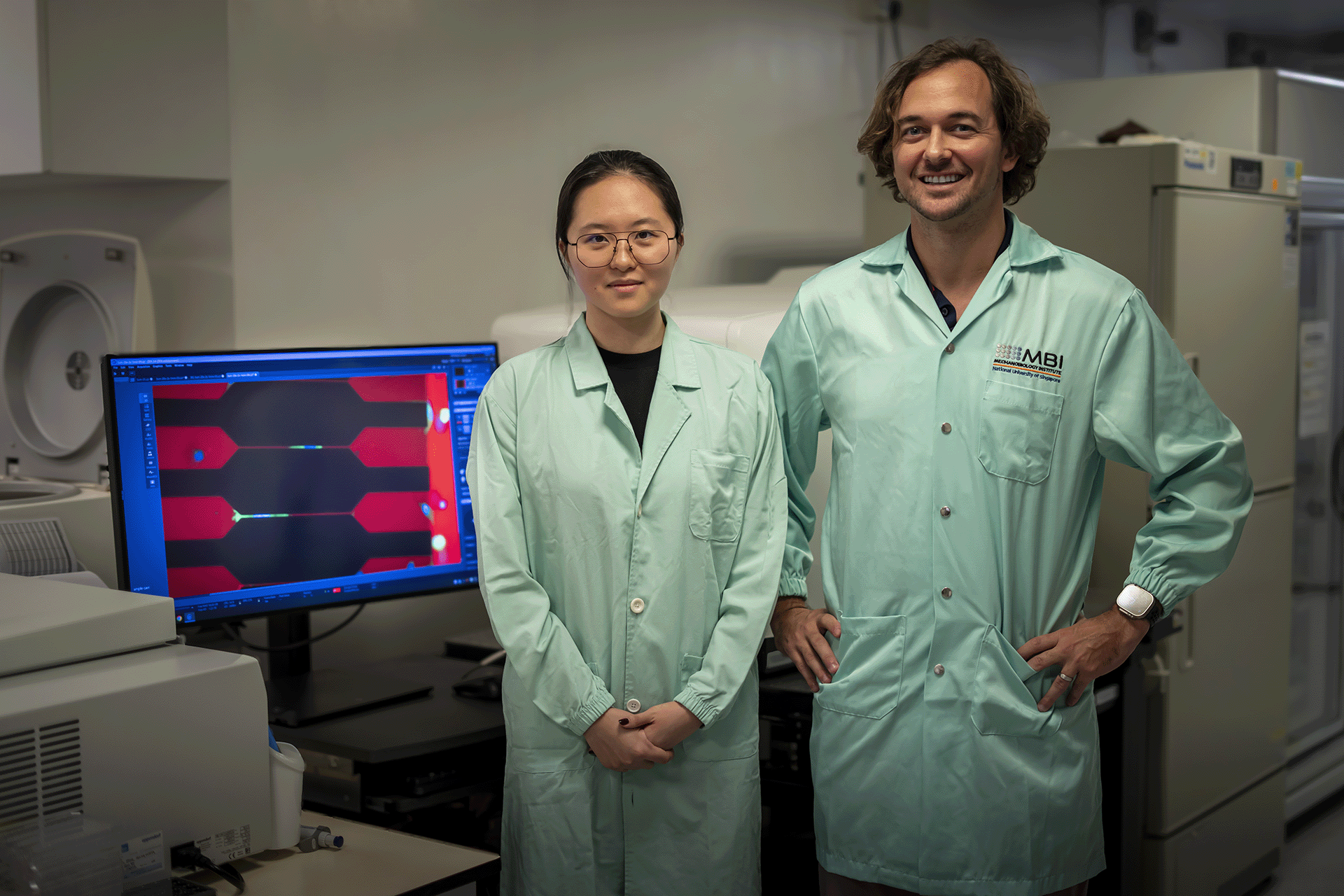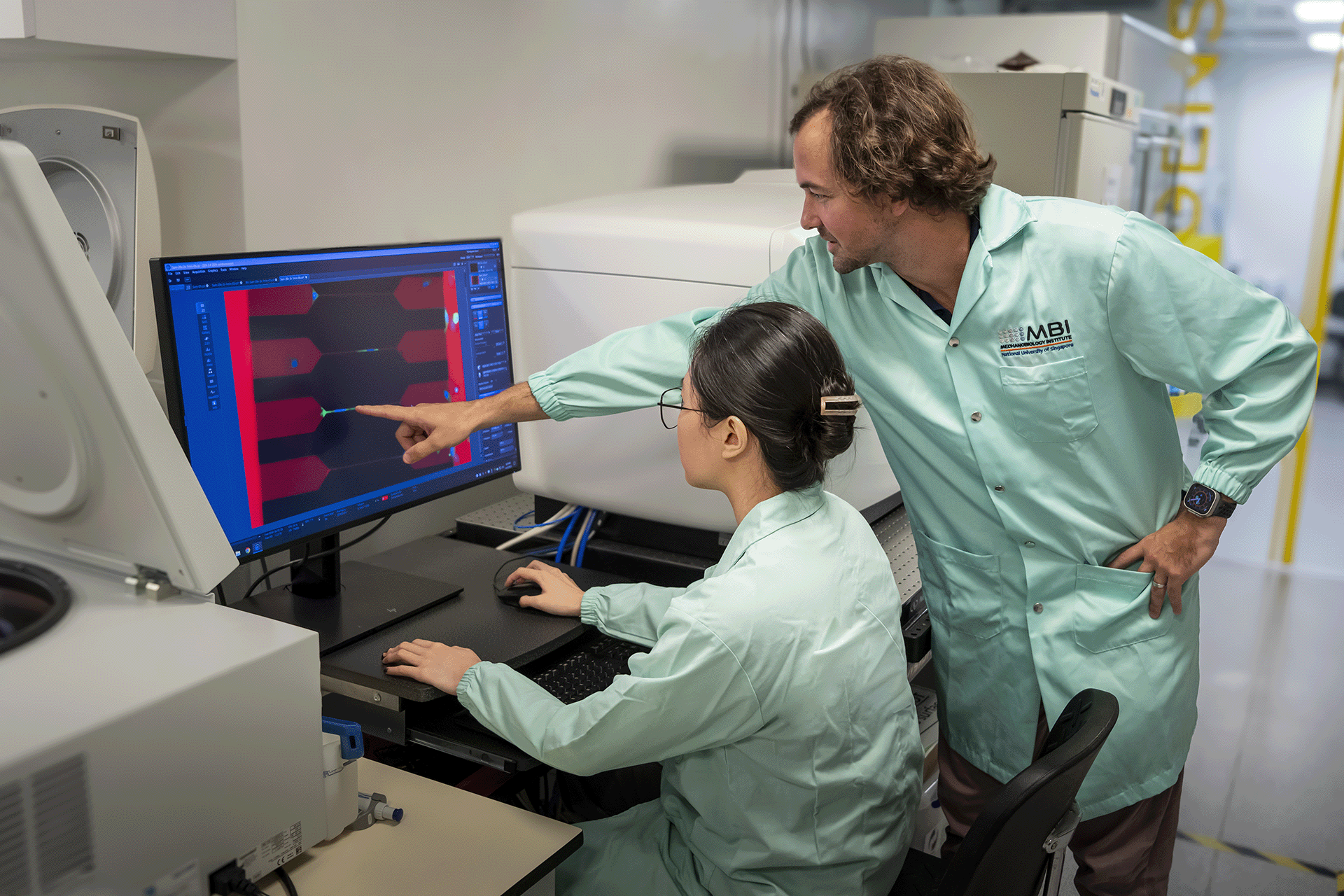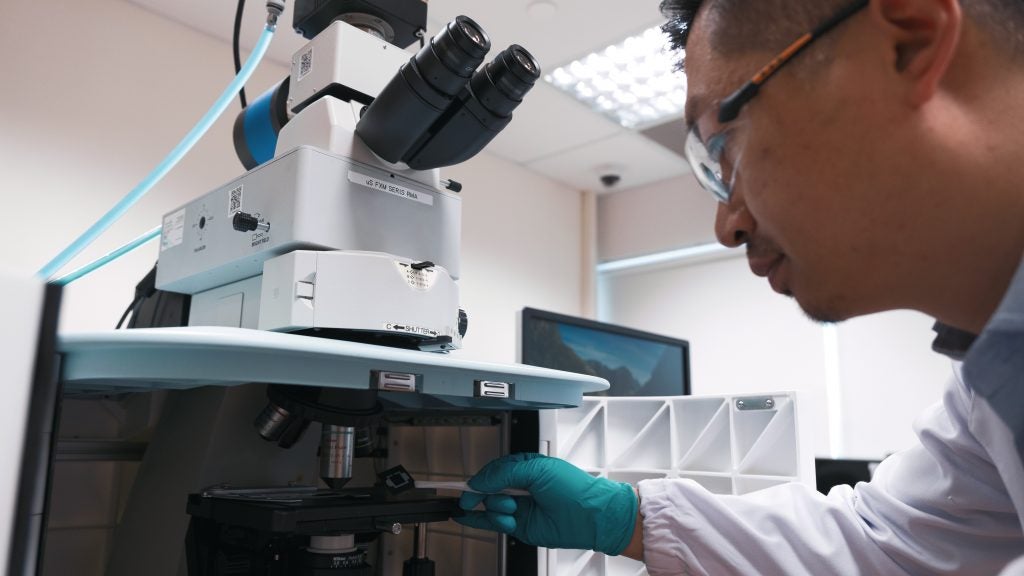
A discovery by researchers at CDE that reveals how cells adapt to physical stress when squeezing into tight spaces could pave the way for breakthroughs in cancer treatment, immune therapies, and regenerative medicine. Using a cutting-edge rapid imaging technique, the team has uncovered in unprecedented detail how cells and their nuclei respond to confinement, offering new insights into cellular behaviour.
When cells travel through the body, they often face the challenge of squeezing through tight, confining spaces. This is critical both for immune cells fighting infection, but also affects how cancer cells are able to invade new environments.
“In order to survive, cells of all kinds must reshape their nuclei dramatically,” said Assistant Professor Andrew Holle (Biomedical Engineering and Principal Investigator at the NUS Mechanobiology Institute) who led the study. “But until now this process has been difficult to observe using traditional imaging techniques, which are too slow to capture rapid changes.”
Asst Prof Holle’s team, working at the Confinement Mechanobiology Lab at the NUS Mechanobiology Institute, solved this problem with a new method based on fluorescence exclusion. This technique uses fluorescent markers to distinguish between different parts of a cell, such as the nucleus and its surroundings.
By measuring how these markers are displaced as cells move and change shape, the researchers are able to calculate nuclear volume and surface area with unprecedented speed—capturing data as fast as once per second.
The team’s findings were published recently in the journal PNAS.

“Our approach reveals dynamic details about the nucleus that were previously hidden,” said Asst Prof Holle.
Their findings showed that as cells enter confined spaces, their nuclear surface area expands to accommodate stress—but only up to a limit. Beyond this point, the nucleus begins to shrink in volume to prevent rupture, demonstrating a self-protective mechanism critical for cellular survival.
This deeper understanding of how cells adapt to physical stress has wide-ranging implications for medicine and bioengineering:
- Cancer treatments: Targeting invasive tumour cells that squeeze through tissues to spread.
- Immune therapies: Enhancing the mobility of immune cells for more effective infection-fighting.
- Stem cell engineering: Controlling how physical environments influence stem cell differentiation for regenerative medicine.
“Our work highlights the physical limits cells impose to protect themselves,” Asst Prof Holle said. “These insights could lead to better therapeutic strategies and new tools to study cell mechanics.”
Moving forward, the researchers say they are now exploring how these nuclear adaptations influence gene expression and overall cell function. They also plan to expand their studies to other cell types—such as immune and stem cells—under different confined conditions.
With its ability to track rapid cellular changes, this innovative technique has the potential to become a powerful tool in medical and bioengineering applications. By revealing fundamental insights into how cells respond to physical stress, the researchers say it could open the way to designing new therapies and a wide range of advancing disease treatments.





